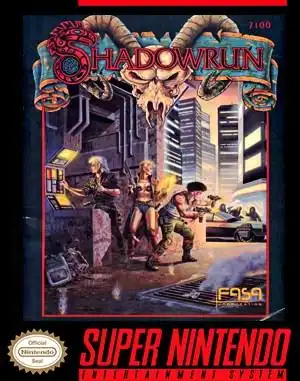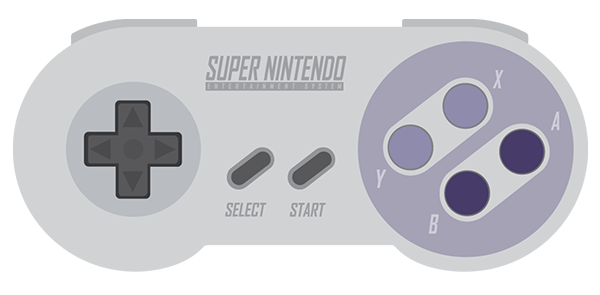Stepping into the rain-slicked streets of 2050 Seattle was a revelation for many SNES owners back in 1993. While fantasy RPGs dominated the console landscape, Beam Software dropped something entirely different: Shadowrun SNES. It wasn't just another swords-and-sorcery adventure; it was a gritty, rain-soaked dive into a world where cyberpunk tech met high fantasy magic.
This wasn't the only Shadowrun game released around that time – the Sega Genesis got its own distinct version – but the Super Nintendo take offered a truly unique experience. It blended isometric action, point-and-click style interaction, and a deep, atmospheric narrative that felt surprisingly mature for the era.
More Than Just Dungeons: A World of Chrome and Magic
What immediately set Shadowrun SNES apart was its setting. Forget elves in forests and dwarves in mines (well, mostly). Here, elves and dwarves wore leather jackets and chrome, casting spells alongside deckers jacking into the Matrix. Corporations ruled supreme, street gangs were deadly, and ancient magic was just as real as the latest cyberware.
The game dropped you into this world as Jake Armitage, a man waking up in a morgue with a bullet in his head and zero memory. From that chilling opening, you were on a quest to uncover your identity and find out who wanted you dead. It was a classic film noir setup, filtered through a distinctly cyberpunk lens, complete with shady characters, double-crosses, and a pervasive sense of danger.
Gameplay That Pushed Boundaries
Shadowrun SNES wasn't your typical console RPG. Instead of menu-driven battles and world map exploration, it presented a more immediate, almost adventure-game-like feel within its isometric view.
- Point-and-Click on a Console: Using a cursor controlled by the D-pad felt alien at first, but it allowed for detailed interaction with the environment and NPCs. You weren't just talking; you were clicking on objects, examining bodies, and truly investigating.
- The Keyword Conversation System: This was groundbreaking. Talking to people wasn't just picking from a list; you learned keywords from conversations or discovered items, and these keywords could be used to ask other people about things. It made dialogue feel dynamic and crucial to progression.
- Real-Time Action: Combat happened in real-time, requiring quick reflexes, though the cursor-based aiming could feel a bit clunky compared to modern action RPGs. Still, facing down gangers, corporate security, or magical creatures kept you on your toes.
- Jacking Into the Matrix: Cyberspace segments offered a distinct change of pace. As a decker, you'd navigate the digital world in a top-down view, battling IC (Intrusion Countermeasures) and stealing data. These sections were essential for uncovering clues and earning cash.
- Karma for Growth: Character progression used Karma points, earned by completing objectives and defeating enemies. You spent Karma to upgrade skills (like Pistol, Dodge, Hacking), attributes (Strength, Charisma), and even learn magic. Earning enough Karma could be a grind, but seeing Jake evolve from a amnesiac nobody to a capable runner was rewarding.
A Story Worth Unraveling
While the gameplay had its quirks (the combat could be slow, cyberspace could get repetitive late game), the narrative was a major draw. Jake's amnesia quest quickly spirals into something much bigger, involving powerful corporations, ancient spirits, and a conspiracy that could shake the foundations of the Sixth World.
The writing was sharp, full of the unique slang and cynical humor of the Shadowrun universe. The characters you met, from friendly barkeepers to shady fixers and potential allies you could hire (for a price!), felt like they belonged in this world. It was a game that respected the player's intelligence, often requiring you to piece together clues from conversations and hacked data rather than just following quest markers.
Legacy and Why It Endures
Shadowrun SNES wasn't a massive commercial hit upon release, but it garnered critical acclaim and has since become a beloved cult classic RPG. It's frequently cited on "best of SNES RPG" lists and praised for being ahead of its time in blending genres and implementing unique mechanics on a console.
Its distinct take on the Shadowrun universe and Jake Armitage's story were even referenced and continued in the successful modern trilogy of Shadowrun tactical RPGs developed by Harebrained Schemes, starting with Shadowrun Returns. Playing the SNES game gives you a deeper appreciation for the roots of that modern revival.
Today, playing Shadowrun SNES means either tracking down original hardware and carts or, more commonly, diving into the world of emulation. Whichever way you play, this cyberpunk-fantasy gem from 1993 remains a compelling, atmospheric, and truly unique RPG experience that's absolutely worth revisiting or discovering for the first time.
Frequently Asked Questions about Shadowrun SNES
Q: Is the Shadowrun SNES game connected to the Sega Genesis version?
A: No, the SNES and Sega Genesis Shadowrun games were developed by different companies (Beam Software for SNES, BlueSky Software for Genesis) and feature entirely different stories, protagonists, and gameplay styles, though they are both based on the same tabletop RPG universe.
Q: How do you play Shadowrun SNES today?
A: The most common ways are via emulation on PC or other devices, or potentially through official retro console releases or services if available (though it's not currently widely available on official modern platforms like Nintendo Switch Online). Original SNES cartridges and hardware are also an option for collectors.
Q: Is Shadowrun SNES a difficult game?
A: It can be challenging, especially early on. Earning Karma for upgrades is slow, combat requires careful positioning and sometimes grinding, and some puzzles require paying close attention to dialogue and clues. However, persistence and learning the game's systems make it manageable and rewarding.
Q: What kind of game is Shadowrun SNES?
A: It's an isometric action RPG with strong adventure game elements. It features real-time combat, a unique keyword-based dialogue system, exploration, hacking mini-games, and character progression through skills and attributes powered by Karma points.


